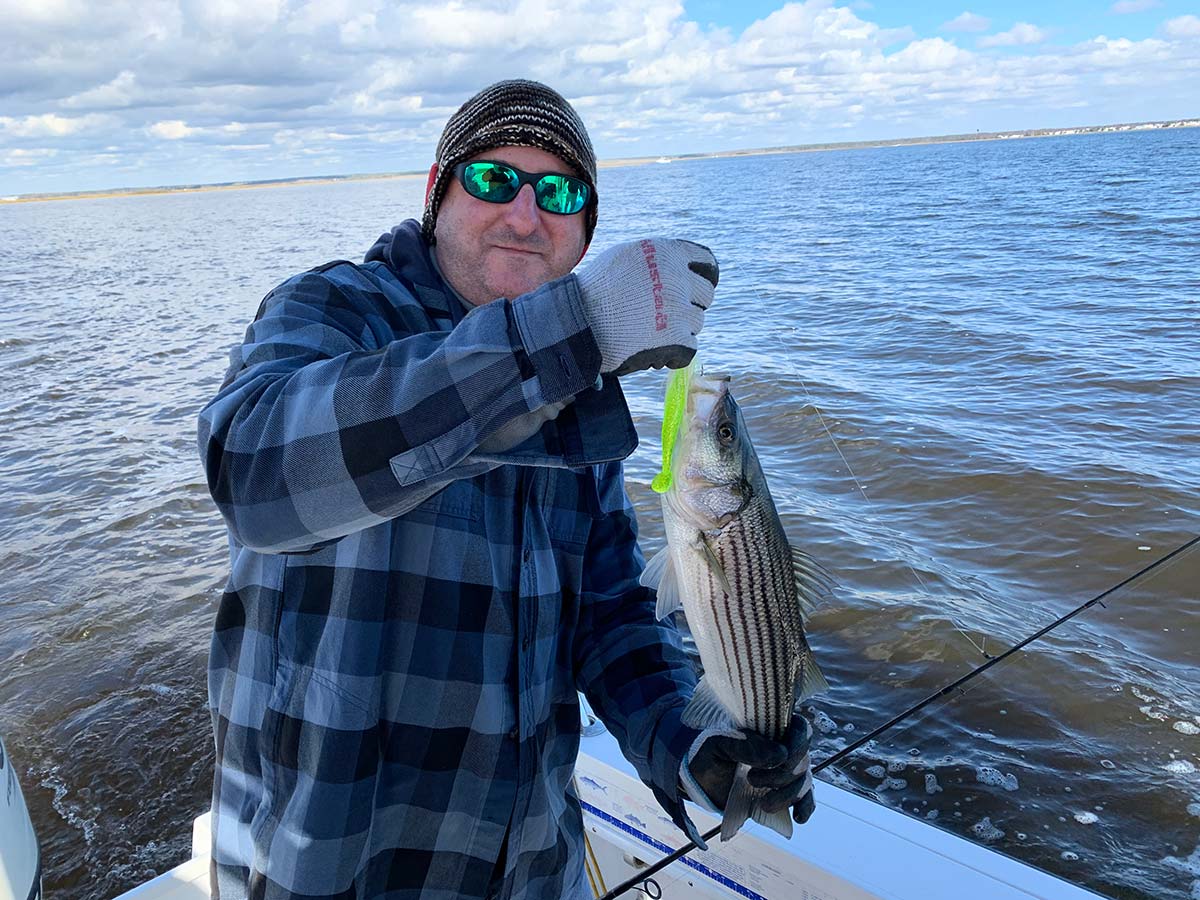
A popular ocean technique scaled down for backwater.
Not every angler has the superior casting ability to land their lure in the sweet spot where staging stripers wait. It takes skill and experience to succeed consistently. Unless fishermen regularly toss lures, it can turn into a struggle in fast order. As a captain that carries a lot of novices or fair-weather friends, I need to see fins and grins as opposed to plastics stuck in the marsh grass. Enter Plan B: trolling the backwaters. Yes, this technique can knock the snot out of striped bass just like it does on bigger waters. Many of the same principals apply despite a handful of necessary modifications.
If the vessel can successfully troll for stripers in the ocean or larger sounds, it can troll for them in the bay. By this I mean, the speed necessary to pull a small spread is achievable. Troll speeds on the bays and small rivers should mimic that of the ocean. Two and a half mph to 3.5 mph is a healthy range and the appropriate vessel velocity is determined by whether one is trolling into the current or against it.
The tackle necessary to catch these fish is quite basic. In fact, I’ll often use the same spinning rod and reel set-ups for trolling the skinny waters as I do when casting. Fluke-type tandems are perfect for schoolies and modest keepers. My reels are lined with 20-pound test Berkley X9 or Spiderwire Durabraid.
Placement of the rods is simple. If anglers can utilize outrodder devices, then by all means, they can and should be used. However, trolling two rods from the gunwale rod holders and one down the middle is sufficient. When trolling in water that ranges from 4 to 7 feet, it’s essential that captains cast the lure behind the boat while at troll speed. The lure must not be allowed to hit the bottom. The bail has to be closed in an instant so the moving boat tightens the line and keeps the lure above the mud and seaweed. Otherwise, unwanted detritus or life finds its way onto a lure that even briefly hits bottom and stripers won’t strike a tainted offering. Simply dropping a presentation straight down as if in the ocean does not work in the back water troll game.
Small jigs or bucktails 1/16 ounce to 1/8 ounce paired with paddletails are deadly. I prefer a Berkley Fusion bucktail of 1/8 ounce paired with a Berkley Ripple Shad or Grass Pig paddle tail. Their action is deadly. I run a 36-inch section of 30-pound test Berkley Big Game monofilament leader in front of the lure.
The locations chosen for trolling up bass in the backwaters isn’t random. Aimlessly pulling lures isn’t as effective as having a game plan. Within sod bank environments that are ubiquitous in all over the Northeast coast, captains should troll parallel to the marsh and as close as possible. The stripers feed on baby shrimp, crabs and baitfish along the edges hence the troll will be most effective there. Every back water system is unique so some estuaries may require anglers to fish toward the top of the tide since the water gets too shallow as the ebb progresses. Other places maintain plenty of depth on any tide. As the contours bend and turn, captains too should adjust their steering to stay within 4 to 8 feet of the edge.
Points and corners of islands often feature small rips and drops that hold bass. Skippers that troll across these will often hook up. I like to hit these features from different directions and multiple times since they are usually productive. In fact, any stretches of water that produce bass should be trolled over multiple times. Areas where rocks are strewn across the waterway floor can hold stripers as well. Like trolling waters with fallen timber, anglers must be extra careful not to let the lures drag the bottom. And don’t be surprised if some quality fluke or bluefish join the catch list.
Any back bay that is home to bass can produce trolled fish. Additionally, bays connecting to rivers that draw a spawning population, can put up staggering numbers. Although trolling back water bass is not the norm, it’s done more frequently than folks realize. I’ve seen large ocean-going vessels, skiffs, Jon boats and kayaks all participating in the technique. Pluses include a super-low mortality rate on releases and super-high numbers of fish caught at times!


